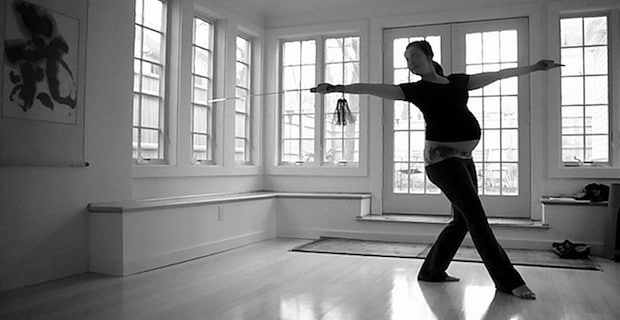
There are many myths that circulate when it comes to exercise and pregnancy, and many of them end up preventing women from maintaining or achieving strong, healthy bodies during their pregnancy. Women should speak to their health care practitioner about their personal concerns, and the list below can help guide the conversation.
MYTH #1: If you haven’t exercised before, you shouldn’t start.
THE FACTS: Simply not true. Exercise for pregnant women is recommended, even for women who do not exercise regularly, because the benefits drastically outweigh the risks. Speak to your health care practitioner if you have concerns about how to get started.
Read more about exercise on a busy schedule
MYTH #2: You should not get your heart rate over 140 BPM.
THE FACTS: This myth, which seems to have traveled the internet by storm, varies in its exact number. Heart rate during pregnancy is quite variable and is influenced by age, stage of pregnancy, and level of fitness. The standard rule of thumb is if you can talk (that is hold a conversation for 2 minutes) while you exercise, then you have enough oxygen for mom and baby. You may breathe heavily but should not be gasping for breath and pausing to breathe before continuing to talk. Some active women will pass this 'talk test' with a heart rate into the 170s and some inactive women may not be able to get their heart rate to a conservative 140. It is very individual.
MYTH #3: You should not exercise in the first trimester.
THE FACTS: This myth is long-dispelled with tons of research to back it up. Bruce K. Young, MD, co-author of Miscarriage, Medicine & Miracles
and professor of obstetrics and gynecology at New York University School of Medicine states that "there is no real evidence that exercise is linked to miscarriage." While the largest number of miscarriages occurs in the first trimester, the facts are that most are chromosomal in nature.
MYTH #4: You cannot lift weights over your head.
THE FACTS: While lifting weights over your head can affect your lower back, this should not be a blanket guideline for active women. With proper positioning that supports the back, everyone can benefit from this exercise. Active women can often continue this type of exercise throughout pregnancy without a problem. Putting the arms over the head can increase heart rate but strength training will rarely raise the heart rate to a concerning level. (To make sure, use the 'talk test' in Myth #2.)
Read more about how diet during pregnancy can impact a child's development
MYTH #5: Exercise shortens labor.
THE FACTS: This is more of a misunderstood fact than a myth. Exercise improves your endurance, which in turn gives you the energy you need to stay active during labor. If you stay active and upright during labor, movement and gravity will assist the baby to move downwards into the pelvic outlet more effectively. Women who don’t exercise regularly are more likely to request an epidural in the earlier stages of labor due to exhaustion. Once in bed, your movement is restricted and your labor can slow down.
Image: Bonbon




